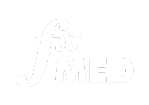Ten evidence-based nutrients that have been shown to support viral immunity

Zinc
Zinc (Zn) is an essential micronutrient known to play a central role in the immune system, involving multiple mechanisms, from skin membrane barrier integrity, to the regulation of lymphocytes, it is critical in generating both innate and acquired (humoral) antiviral responses.- Zinc is required for normal development and function of neutrophils and natural killer cells.
- Zinc deficiency also affects the activation potential of T lymphocytes, Th1 cytokine production, and B lymphocyte assistance (e.g. via antibody production).
- Macrophages are pivotal to all cellular immunologic functions; however, these functions are adversely affected by zinc deficiency, subsequently dysregulating intracellular infection control, cytokine production, and phagocytosis.
- Zinc also provides general metabolic antioxidant support and can stabilize membranes.
- Zinc, being an integral component of many viral enzymes, proteases, and polymerases, supports the optimum resilience of function of cells – highlighting the importance of regulating cellular and systemic zinc distribution to inhibit viral replication and distribution.
DOSE (For Clinical Immune Applications)
15 mg – 30 mg (elemental) Zn/day common for maintenance of clinical sufficiency. 50 – 100 mg/d may be used safely for acute periods during severe infection. Best taken with food (for optimum digestive comfort) – however, Citrate and Picolinate chelated forms possess some of the highest independent bioavailability.
RELATED PRODUCTS/COMPOUNDS
- Tracemins Complex (RN Labs) – available to NZ practitioners only
- Tri-Factor (RN Labs) – available to NZ practitioners only
Note: Tracemins and Tri-Factor products may suit general preventative support, however, we have available in Thorne, Metabolic Maintenance and Pure Encapsulations 25mg capsules of Zinc Picolinate, which may be more suitable for the larger doses required during infection and can be accessed by both NZ and AU practitioners.

Selenium
Selenium (Se) is an essential trace element having biological functions of utmost importance for human health.
- Most Seleno-proteins participate in antioxidant defence and as a cofactor in redox regulation, particularly via the various types of glutathione peroxidases (GPxs).
- Glutathione is an intracellular reducing agent that helps maintain the redox potential of the cell and is important for both extra- and intra-cellular immune function & has been shown to block replication of HIV, HSV-1, influenza virus, and potentially other viruses.
DOSE (For Clinical Immune Applications)
50 – 200 µg/day (elemental). Best taken with meals (in Selenomethionine form).
RELATED PRODUCTS/COMPOUNDS
- Tracemins Complex (RN Labs)
- Selenomethionine (Thorne)

NAC
N-acetylcysteine (NAC) is the key rate-limiting precursor amino acid in the production of Glutathione (supported by Selenium as a cofactor).
- NAC has demonstrated antioxidant, anti-inflammatory and mucolytic activity, as well as being an effective enhancer of T-cell function.
- Studies have shown that NAC is able to reduce the duration of intensive care unit (ICU) stays during conditions involving respiratory distress.
DOSE (For Clinical Immune Applications)
500 – 2,000mg/d for focussed clinical support and prevention. Doses as high as 3,000 – 6,000 mg/d have been used during the acute period of an infection. May be taken on an empty stomach for optimal absorption (however, it is acceptable to be taken with food if gastrointestinal discomfort or any gastric ulcers are present).
RELATED PRODUCTS/COMPOUNDS
- NAC 900mg (Pure Encapsulations)
- NAC 600mg (Metabolic Maintenance)
- NAC 500mg (Thorne)
- NAC Powder (RN Labs) – available to NZ practitioners only

Vitamin A
Vitamin A is critical to a competent immune system. Vitamin A rich foods have been utilised to maximise immunity during cold and flu season throughout the world for centuries.
- Vitamin A assists numerous defence mechanisms via direct genetic and receptor-based interactions (when balanced in tandem with Vitamin D) for increasing infection resistance.
- Vitamin A activates B & T lymphocytes, acts as a lipid antioxidant, enhances antibody production and phagocytosis, as well as supporting healthy membrane function and integrity.
- The natural forms of Vitamin A found in Arctic Cod Liver oil may provide one of the safest and most effective ways of delivering this important nutrient to the body.
DOSE (For Clinical Immune Applications)
1,000 IU – 5,000 IU/day. Being a fat-soluble vitamin requires lipid digestion processes to be absorbed (hence best taken with meals). Entire daily dose can be taken in one sitting.
RELATED PRODUCTS/COMPOUNDS
- Vitamin A 3000mcg (Pure Encapsulations)
- Vitamin A + Carotenoids (Pure Encapsulations)
- Beta Carotene (with mixed carotenoids) (Pure Encapsulations)
- Arctic Cod Liver Oil (Nordic Naturals)
- Arctic Cod Liver Oil Liquid (Nordic Naturals)

Vitamin D
Almost all cells in the body have Vitamin D Receptors (VDRs) due to the importance of its hormone-like structure for mediating the proper functioning of the cell (via direct gene expression regulation).
- Resting T and B lymphocytes do not have a VDR, but when activated, their expression of VDR is induced, demonstrating the importance of sufficient vitamin D for regulating immune functions during the active stages of infection and inflammation.
- Vitamin D influences the action of Dendritic cells (which are particularly important for immuno-surveillance), as well as regulating the production of several cytokines including IL-2, TGFB1 and immunoglobin synthesis in activated B cells.
- This capacity for Vitamin D to act as a potent immunomodulator may be especially important during the active stages of an immune response to infection (since phenomena like Cytokine storms are a significant cause of tissue damage during pronounced infective disease).
DOSE (For Clinical Immune Applications)
Intake of 1,000 IU per day usually provides reliable support, however in some cases 2,500 – 5,000 IU daily may be required to maintain serum 25-OH-D concentrations in excess of 75 nmol/L (30 ng/ml). Being a fat-soluble vitamin requires lipid digestion processes to be absorbed (hence best taken with meals). Entire daily dose can be taken in one sitting.
RELATED PRODUCTS/COMPOUNDS
- D-1,000 (Thorne)

Lysine
Increasing the Lysine / Arginine ratio of available amino acids in tissues has been shown to potentially inhibit the stability and replication of various viruses including Herpes, Influenza A, and other viruses.
- Lysine is an amino acid found in one of the highest quantities in quality dietary protein sources, making large amounts potentially necessary to the body at certain times, and generally well tolerated by the body.
- Lysine also has a key role in the integrity of collagen and connective tissues important for maintaining healthy tissue membranes.
DOSE (For Clinical Immune Applications)
500mg – 3g/day. May be taken on an empty stomach for optimal absorption, (however, it is acceptable to be taken with food or other protein supplements as necessary).
RELATED PRODUCTS/COMPOUNDS
- L-Lysine 90s & 270s (Pure Encapsulations)
- L-Lysine (Thorne)
- Lysine Powder (RN Labs) – available to NZ practitioners only

Vitamin C (Ascorbic acid)
Ascorbic acid is water-soluble, and acts as a chain-breaking antioxidant, reacting directly with singlet oxygen, hydroxyl radicals, and superoxide radicals.
- As an electron donor, vitamin C’s direct antioxidant effects protect cells from endogenous and exogenous reactive oxygen and nitrogen species.
- Vitamin C is also involved in the regeneration of other antioxidants, such as vitamin E and glutathione, back to their active state.
- Vitamin C has antiviral activity which may be due, at least in part, to enhanced interferon activity. (1,2,3,4,5)
DOSE (For Clinical Immune Applications)
For ongoing maintenance and prevention: 100mg – 500mg vitamin C daily should be considered sufficient for most patients. Mixed with water in divided doses spread throughout the day.
RELATED PRODUCTS/COMPOUNDS
- C-RLA™ – available in original and vanilla caramel flavour (Researched Nutritionals)
- Liposomal Vitamin C (Quicksilver Scientific)
- Buffered C Powder (Thorne)
- Vitamin C with Flavonoids (Thorne)

Arabino Galactan
The high concentration of branched galactose structures in arabinogalactan fibre (from Larch tree) has been shown to provide an ideal soluble prebiotic fibre to the digestive tract (providing anti-inflammatory support benefits via its positive influences on the gut membrane and microbiome).
In cell and animal models, Arabinogalactan is capable of enhancing the function of macrophages, natural killer cells, and pro-inflammatory cytokines, increasing the human body’s potential to defend against cold virus infections.
Furthermore, of particular note is the potential for these structures to bind directly to certain viruses, possibly inhibiting their ability to attach to cells in the first place (although this potential has not been studied for all novel and specific viruses so far).
Around 200 volunteers who had experienced at least 3 Respiratory Infections within the past 6 months were trialled on 4.5g Arabinogalactan vs a Placebo. Arabinogalactan significantly increased the participant’s capacity to defend against infections, resulting in a reduced incidence and/or severity of common cold virus infections in the treatment group.
Notably, some studies have also shown a significant increase in the percentage of CD8+ T-suppressor cells, and the proportion and proliferation of monocytes in lymphocyte populations. This suggests Arabinogalactan can influence TNF-a secretion, and modulate immune cell proportions.
This is significant because it demonstrates not only an ability to potentially increase immunity and resilience to infection, but also more crucially to support the regulation of the inflammatory response during infection (to assist symptoms and tissue damage remaining under control). (23,24,25)
DOSE (For Clinical Immune Applications)
1 – 5 g/d. Can be taken with or without food (mixes readily in water, with a pleasant sweet taste).
RELATED PRODUCTS/COMPOUNDS
- Arabinex (Thorne)

Curcumin
The abrupt elevation in inflammatory mediators during viral infection may reach excessive levels in certain individuals and situations (e.g. Cytokine storm), making the initially protective immune response particularly damaging to the body if it progresses beyond a manageable level.
Having safe mechanisms for downregulating an overactive immune response may therefore be beneficial to have in such instances.
- Curcumin has been shown to have potent anti-inflammatory capabilities (without the same degree of immunosuppression seen with NSAIDs and Corticosteroids), when taken at typical therapeutic doses, and may therefore provide helpful complementary support during severe infection stages.
- Curcumin has also demonstrated direct inhibitory effects on various bacteria, fungi and viruses, namely HBV, HCV and HIV – with differing mechanisms of action proposed for each, however, a ‘degradation by default’ pathway is thought to be a commonality contributing to this effect. (27,28)
DOSE (For Clinical Immune Applications)
Curcumin 500 – 3,000 mg/d. Phytosome forms of Curcumin (e.g. Curcutex) address the absorption limitations via a lipid carrier molecule (facilitating much greater absorption and therefore smaller effective doses).
RELATED PRODUCTS/COMPOUNDS
- Curcutex (RN Labs) – available to NZ practitioners only.
- Meriva 500-SF (Thorne)
Note: Curcumin and other similar botanical anti-inflammatories may be most appropriate to administer only when the existing infection is proving excessively severe (requiring further regulation) rather than preemptively during preventative programs.

PEA
Palmitoylethanolamide (PEA), typically being used for neurogenic pain, also has notable anti-inflammatory benefits (including within the nervous system).
Many viruses are known to infiltrate the nervous system as a conduit to the rest of the body, and therefore potentially act as a haven for dormancy (for possible later resurgence).
As a result, the active stages of infection can cause numerous nervous system symptoms, including considerable neurogenic pain (e.g. shingles).
- PEA may provide a dual benefit of not only calming inflammation and limiting damage to delicate nervous system tissues, but may also help minimise pain perception during the inflammatory stages of such viruses. (29)
DOSE (For Clinical Immune Applications)
600 – 2,400 mg/day. Being lipid soluble, PEA requires lipid digestion for optimum absorption and therefore is best taken with meals. Micronised PEA significantly assists bioavailability and therefore clinical efficacy.
RELATED PRODUCTS/COMPOUNDS
- (PEA)+ (Enzyme Science )
- Micronised PEA Powder (RN Labs) – available to NZ practitioners only.
Note: A loading period of 4 – 12 weeks may be required before maximum benefits are seen (therefore commencing preventative dosing early is advantageous and well tolerated)
Note: Datasheets for all of the above-mentioned products can be viewed when logged into the FxMed Practitioner Hub.
- Meister, A 1994, ‘Glutathione, ascorbate, and cellular protection’, Cancer Research, vol. 54, pp. 1969S-75S.
- Sauberlich, H 1994, ‘Pharmacology of Vitamin C’, Annual Review of Nutrition, vol. 14, pp. 371-91.
- Leibovitz, B & Siegel, BV 1981, ‘Ascorbic acid and the immune response’, Advances in Experimental Medicine & Biology, vol. 135, pp. 1-25.
- Frei, B, Birlouez-Aragon, I & Lykkesfeldt, J 2012, ‘Authors’ perspective: What is the optimum intake of vitamin C in humans?’, Critical Reviews in Food Science and Nutrition, vol. 52, no. 9, pp. 815-29.
- Levine, M, Conry-Cantilena, C, Wang, Y, Welch, RW, Washko, PW, Dhariwal, KR, Park, JB, Lazarev, A, Graumlich, JF, King, J & Cantilena, LR 1996, ‘Vitamin C pharmacokinetics in healthy volunteers: evidence for a recommended dietary allowance’, Proceedings of the National Academy of Sciences of the USA, vol. 93, no. 8, pp. 3704-9.
- Read, S. A., Obeid, S., Ahlenstiel, C., & Ahlenstiel, G. (2019). The Role of Zinc in Antiviral Immunity. 696–710.
- Velthuis, A. J. W., Worm, S. H. E. Van Den, Sims, A. C., Baric, R. S., Snijder, E. J., & Hemert, M. J. Van. (2010). Zn 2 + Inhibits Coronavirus and Arterivirus RNA Polymerase Activity In Vitro and Zinc Ionophores Block the Replication of These Viruses in Cell Culture. 6(11), 1–10. https://doi.org/10.1371/journal.ppat.1001176
- Shankar, A. H., & Prasad, A. S. (1998). Zinc and immune function: The biological basis of altered resistance to infection. American Journal of Clinical Nutrition, 68(2 SUPPL.). https://doi.org/10.1093/ajcn/68.2.447S
- Hatfield, D. L., Schweizer, U., Tsuji, P. A., & Gladyshev, V. N. (2016). Preface. In Selenium: Its Molecular Biology and Role in Human Health, Fourth Edition. https://doi.org/10.1007/978-3-319-41283-2_1
- Roman, M., Jitaru, P., & Barbante, C. (2014). Selenium biochemistry and its role for human health. Metallomics, 6(1), 25–54. https://doi.org/10.1039/c3mt00185g
- Smith, A. D., & Dawson, H. (2006). Glutathione is required for efficient production of infectious picornavirus virions. Virology, 353(2), 258–267. https://doi.org/10.1016/j.virol.2006.06.012
- Zhang, Y., Ding, S., Li, C., Wang, Y., Chen, Z. H. E., & Wang, Z. (2017). Effects of N ? acetylcysteine treatment in acute respiratory distress syndrome?: A meta ? analysis. 2863–2868. https://doi.org/10.3892/etm.2017.4891
- Lee, H., & Ko, G. (2016). Antiviral effect of vitamin A on norovirus infection via modulation of the gut microbiome. Nature Publishing Group, 1–9. https://doi.org/10.1038/srep25835
- Osiecki, H. (2010). The Nutrient Bible (9th ed.), pg23-pg27, Kelvin Grove, Australia: Bio Concepts Publishing.
- Osiecki, H. (2010). The Nutrient Bible (9th ed.), pg277 – pg278, Kelvin Grove, Australia: Bio Concepts Publishing.
- Gropper, S. S., & Smith, J. L. (2013). Advanced Nutrition and Human Metabolism (sixth ed.), pg371 – pg400. Yolanda Cossio.
- Manuscript, A., Vitamin, T., & Pandemic, D. D. (2009). NIH Public Access. 29(6), 361–368. https://doi.org/10.1016/j.mam.2008.08.008.The
- Tsoukas, C. D., Provvedini, D. M., & Manolagas, S. C. (1984). 1,25-dihydroxyvitamin D3: a novel immunoregulatory hormone. Science (New York, N.Y.), 224(4656), 1438–1440. https://doi.org/10.1126/science.6427926
- Gauzzi, M. C., Purificato, C., Donato, K., Jin, Y., Wang, L., Daniel, K. C., … Gessani, S. (2020). Impairment of Functional Activities and Chemotaxis 1. https://doi.org/10.4049/jimmunol.174.1.270
- Adams, J. S., Gacad, M. A., Anders, A., Endres, D. B., & Sharma, O. P. (1986). Biochemical indicators of disordered vitamin D and calcium homeostasis in sarcoidosis. Sarcoidosis, 3(1), 1–6.
- Mathieu, C., & Adorini, L. (2002). The coming of age of 1,25-dihydroxyvitamin D(3) analogs as immunomodulatory agents. Trends in molecular medicine, 8(4), 174–179. https://doi.org/10.1016/s1471-4914(02)02294-3
- Tardiolo, G., Bramanti, P., & Mazzon, E. (2018). Overview on the Effects of N -Acetylcysteine in Neurodegenerative Diseases. https://doi.org/10.3390/molecules23123305
- Dion, C., Chappuis, E. & Ripoll, C. Does larch arabinogalactan enhance immune function? A review of mechanistic and clinical trials. Nutr Metab (Lond) 13, 28 (2016). https://doi.org/10.1186/s12986-016-0086-x
- Nantz M, Painter A, Parker E, McGill C, Percival S. Evaluation of arabinogalactan’s effect on human immunity. The FASEB Journal. 2001;15(4):633.
- Udani JK, Singh BB, Barrett ML, Singh VJ. Proprietary arabinogalactan extract increases antibody response to the pneumonia vaccine: a randomized, double-blind, placebo-controlled, pilot study in healthy volunteers. Nutr J. 2010;9:32. doi:1186/1475-2891-9-32.
- Mocchegiani, E., Romeo, J., Malavolta, M., & Costarelli, L. (2013). Zinc : dietary intake and impact of supplementation on immune function in elderly. 839–860. https://doi.org/10.1007/s11357-011-9377-3
- Gupta, S. C., Patchva, S., & Aggarwal, B. B. (2013). Therapeutic roles of curcumin: lessons learned from clinical trials. The AAPS journal, 15(1), 195–218. https://doi.org/10.1208/s12248-012-9432-8
Share:
Related Posts

Goodbye Pie Chart, Hello Phase 1 Sliders
Written by Allison Smith, ND | 2025 As we usher in a new era of DUTCH testing which leaves behind the concept of the three-way

Introducing the DUTCH Dozen
Written by Kelly Ruef, ND | 2025 Hormone testing can be complex, which is why Precision Analytical developed the DUTCH Dozen, an interpretive framework that

DUTCH Report Enhancements
Written by Hilary Miller, ND | 2025 Precision Analytical have released the newest version of the DUTCH Test. This is the report’s most significant update

Gallbladder Health 101: What It Does and How to Keep It Working Well
Written by Ashley Palmer & Pooja Mahtani | 2025 The gallbladder may not get much attention compared to the gut, but it plays a central

Can You Bring Vitamins on a Plane? How To Travel with Supplements
Written by Austin Ruff | 2024 Are you traveling for a work conference, an athletic competition, or a weekend getaway? Just because you’re leaving home
